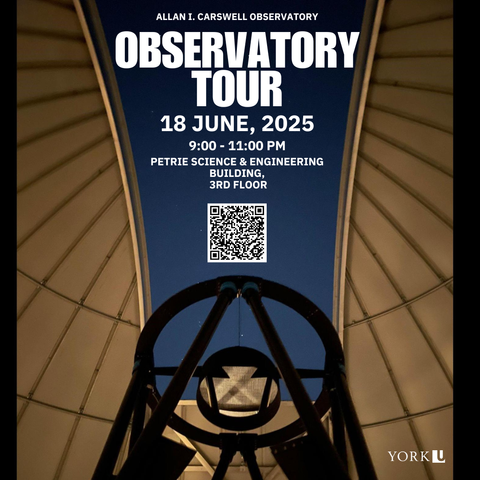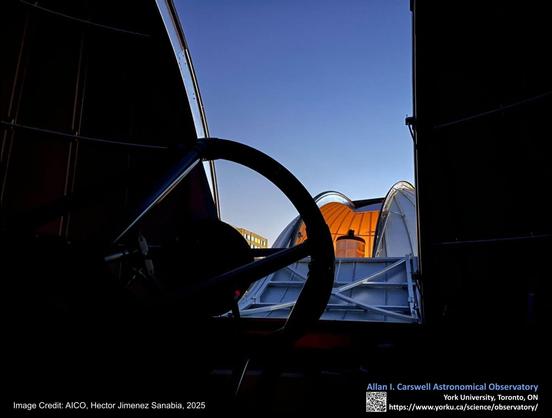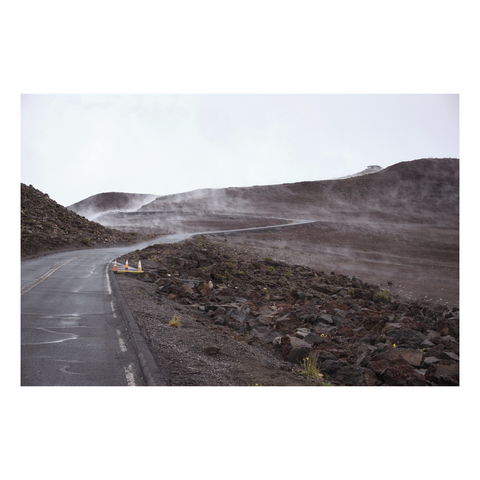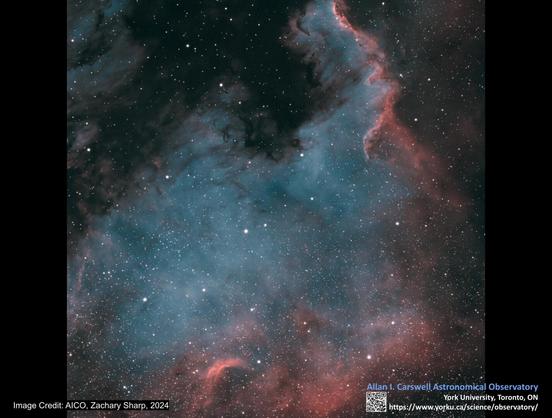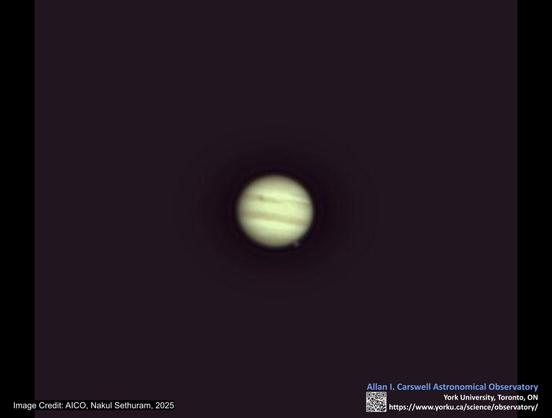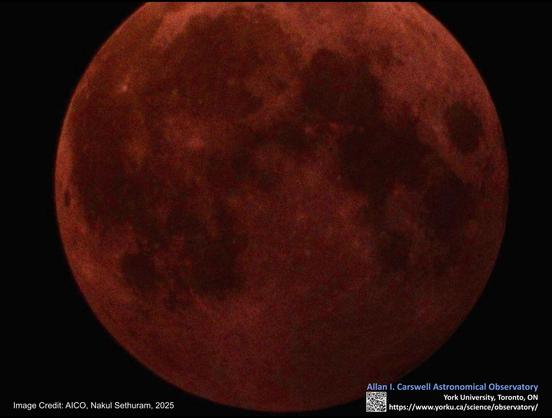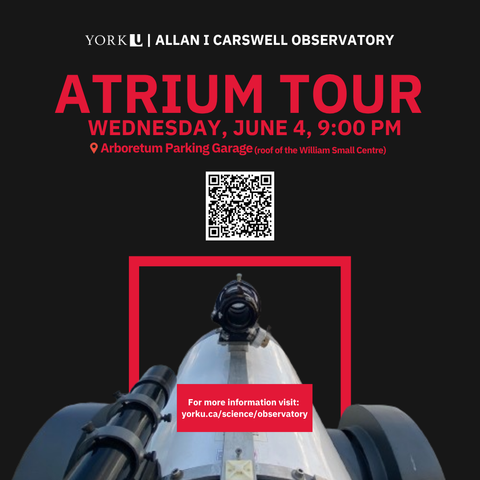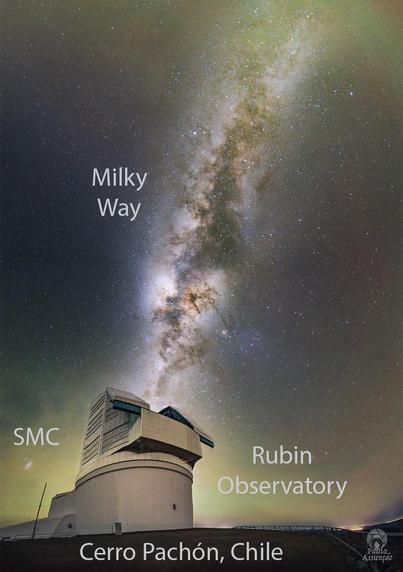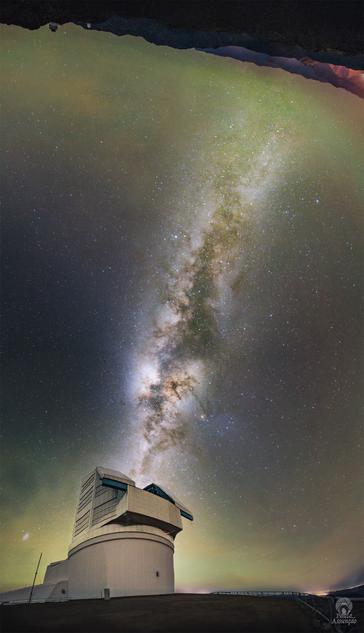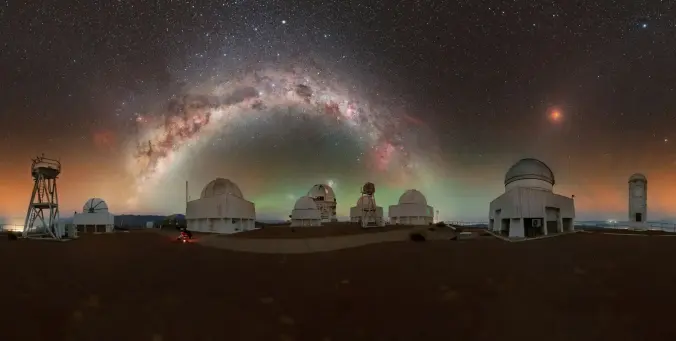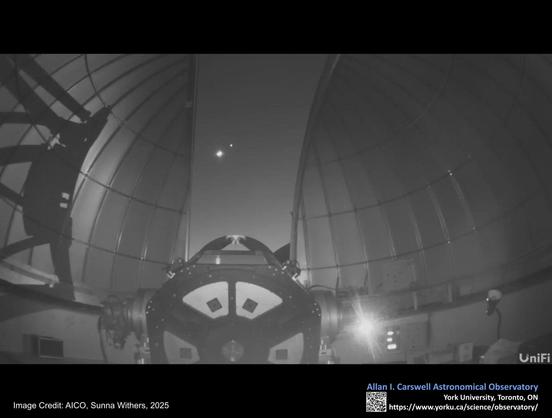#observatory
Bonus: If the skies are clear, we’ll set up our 1m telescope for live observing!
Date: Wednesday, June 18, 2025
Time: 9:00 – 11:00 PM ET
Location: Petrie Science and Engineering Building, 3rd Floor
Get your free tickets here: https://www.zeffy.com/en-CA/ticketing/allan-i-carswell-observatory-tour-june-18th--2025
#Astronomy #Astronomer #Space #YorkU #Observatory #AllanICarswellObservatory #Stargazing #Telescope #Planets #Stars #Science #Physics #Toronto #YorkUObservatory #ClearSkies #Tour #FreeEvents #FamilyFriendly #ScienceOutreach #Tour #AICO
We pulled electrical wire through underground conduit to the base of the telescope pier today. Very little hassle. Not connected to utility power or receptacles as yet.
#observatory #construction
If weather permits, we’ll have Online Public Viewing where we show you live views from our 1m telescope!
Date: Monday, June 16, 2025
Time: 9:00 – 10:00 PM ET
Where: www.youtube.com/@YorkUObservatory/live
#Moons #Hydra #Nix #Pluto #SpaceExploration #Space #Astronomer #Astronomy #Radio #Show #Podcast #YorkU #Observatory #AllanICarswellObservatory #Stargazing #YorkUniverse #Telescope #Planets #Stars #Science #Physics #Toronto #YorkUObservatory #AICO
On 📆 June 23 the @VRubinObs #observatory will unveil a first look at ultrahigh-definition images and videos of the cosmos taken 🔭 from a mountaintop in #Chile. And you can participate by joining a public livestream (in English and Spanish) or one of the in-person watch parties at #planetariums, #universities and #museums 🏛️ around the globe. https://www.scientificamerican.com/article/see-vera-c-rubin-observatorys-first-images-live-with-these-watch-parties/
observatory documenting two galaxies colliding
#Observatory #Galaxy #Space #Sci-fi #Stars #Cosmic #Alien #Machine #Ancient #Technology #Celestial #Metallic #Stone #Symbol
#Img2img #AiArt #AiArtists #AiArtCommunity #StableDiffusion
on actual stuff: https://aieris.art/featured/observatory-documenting-two-galaxies-colliding-eris-and-ai.html
#landscape #landscapephotography #alienlandscape #volcano #volcanic #crater #road #mountainpass #observatory #astronomy #geology #fog #mist #hawaii #maui #mountaintop #fineartphotography #fujixseries #fujifilm
121/365
Caldwell 20, also known as the North America Nebula, is about 1800 light-years away in the constellation Cygnus. Its shape is said to resemble the North American continent, hence the nickname. This region is actively forming stars, particularly in a dense area called the Cygnus Wall.
#Caldwell20 #NorthAmericaNebula #NGC7000 #CygnusConstellation #DeepSky #Nebulae #StarFormation #SpaceExploration #Space #Astronomer #Astronomy #SpaceScienceSaturday #YorkU #Observatory #AllanICarswellObservatory #Stargazing #YorkUniverse #Telescope #Planets #Stars #Science #Physics #Toronto #YorkUObservatory #AICO
The Vera C. Rubin Observatory will map the entire southern sky every few nights
The team will unveil the inaugural image on 23 June; in the meantime, the researchers are keeping quiet about what it shows. “We’ve been very serious about keeping it capped, so that we can do a big reveal”...
Date: Wednesday, June 11, 2025
Time: 9:00 – 11:00 PM ET
Location: Arboretum Lane Parking
Get your free tickets here: https://www.zeffy.com/en-CA/ticketing/allan-i-carswell-arboretum-in-person-event-june-11th--2025 atri
Tickets are free but required, and the tour is weather dependent so please ensure that the event is still running the day of by checking our socials or website at https://yorku.ca/science/observatory
#Astronomy #Astronomer #Space #YorkU #Observatory #AllanICarswellObservatory #Stargazing #Telescope #Planets #Stars #Science #Physics #Toronto #YorkUObservatory #ClearSkies #FreeEvents #FamilyFriendly #ScienceOutreach #Tour #AICO
If weather permits, we’ll have Online Public Viewing where we show you live views from our 1m telescope!
Date: Monday, June 9, 2025
Time: 9:00 – 10:00 PM ET
Where: www.youtube.com/@YorkUObservatory/live
#SolarSystem #Pioneer10 #SpaceExploration #Space #Astronomer #Astronomy #Radio #Show #Podcast #YorkU #Observatory #AllanICarswellObservatory #Stargazing #YorkUniverse #Telescope #Planets #Stars #Science #Physics #Toronto #YorkUObservatory #AICO
@ost_observatory
Welcome to the bright site and may the power be with us.
A #NewHere may help.
#introduction #astronomy #Potsdam #UniversityOfPotsdam #UniPotsdam #observatory #science #physics #ClearSkies #outreach #ScienceOutreach
Hi Mastodon! 👋
We are the OST (Overwhelmingly Small Telescope) Observatory at the University of Potsdam in Golm, on the outskirts of Potsdam, Germany.
Our main telescope is a PlaneWave CDK20 Astrograph. We focus on educating students in astronomy and supporting both undergraduate and postgraduate projects. We occasionally capture and share astronomical images, and we are excited to post some of them here.
We are also passionate about science outreach and regularly participate in public events such as the Potsdam Day of Science and the Long Night of Astronomy.
Follow us for updates in both English and German!
#introduction #astronomy #Potsdam #UniversityOfPotsdam #UniPotsdam #observatory #science #physics #ClearSkies #outreach #ScienceOutreach
Experience the Strawberry Moon on June 11! This Full Moon does not get its name from its hue or appearance but from the Native American Algonquian tribes as well as the Ojibwe, Dakota, and Lakota who would harvest their ripened strawberry crop around this time of year.
#FullMoon #StrawberryMoon #Moon #SpaceExploration #Space #Astronomer #Astronomy #SpaceScienceSaturday #YorkU #Observatory #AllanICarswellObservatory #Stargazing #YorkUniverse #Telescope #Planets #Stars #Science #Physics #Toronto #YorkUObservator
Date: Wednesday, June 4, 2025
Time: 9:00 – 11:00 PM ET
Location: Arboretum Lane Parking
Get your free tickets here: https://www.zeffy.com/en-CA/ticketing/allan-i-carswell-arboretum-in-person-event-june-4th--2025
Tickets are free but required, and the tour is weather dependent so please ensure that the event is still running the day of by checking our socials or website at https://yorku.ca/science/observatory
#Astronomy #Astronomer #Space #YorkU #Observatory #AllanICarswellObservatory #Stargazing #Telescope #Planets #Stars #Science #Physics #Toronto #YorkUObservatory #ClearSkies #FreeEvents #FamilyFriendly #ScienceOutreach #Tour #AICO
28May2025
PROJECT & SCIENCE NEWS - NOTICIAS DEL PROYECTO Y DE LA CIENCIA
Mark your calendars! Rubin imagery will be revealed to the world for the first time on June 23rd, 2025. This event, called Rubin First Look, will include a livestream of the official press conference in Washington, DC starting at 11:00 a.m. EDT. Watch parties are being organized in many locations, and anyone can participate virtually in this historic event. Confirmed details are available in this news post, and additional updates will be shared on rubinobservatory.org.
Preparations are ongoing for the Rubin Community Workshop, to be held in Tucson, AZ on July 28 - August 1. Everyone who applied for a talk or poster should now have received an email with their session assignment and a link to presenter information. Late poster applications are still being accepted. Follow the latest updates on the Rubin Community Workshop meeting website.
Those attending at the upcoming 246th American Astronomical Society (AAS) summer meeting in Anchorage, Alaska may be interested in these town hall sessions, both of which are scheduled for June 11th: the Rubin Observatory Town Hall (12:45 p.m. local time) and Vera Rubin Celebration Town Hall (6:30 p.m. local time). Additional information can be found on the AAS 246 meeting webpage.
Rubin published the 9th in a series of science preview press releases on May 14th. Read “NSF–DOE Vera C. Rubin Observatory will Unlock New Understanding of Variable Stars” on rubinobservatory.org.
A new feature story, “Ready, Set, Process: Preparing for Rubin Observatory's Data Deluge,” offers a look inside Rubin’s impressive data infrastructure. It’s published on rubinobservatory.org, and on the NSF NOIRLab and SLAC National Accelerator Laboratory websites.
The Education and Public Outreach team has made a new resource available for anyone giving a public talk about Rubin >>
https://www.lsst.org/news/digest
#space #earth #observatory #science #tech #construction #nature #NASA
A Milky Road to the #Rubin #Observatory
#Astronomy #Picture of the Day
TOPIC>
A Milky Road to the Rubin Observatory
* Image Credit: NSF, DOE, Rubin Obs., Paulo Assunção Lago (Rubin Obs.)
https://www.instagram.com/passuncao.ph/
https://rubinobservatory.org/
https://www.energy.gov/
https://www.nsf.gov/
Explanation:
Is the sky the same every night? No -- the night sky changes every night in many ways. To better explore how the night sky changes, the USA's NSF and DOE commissioned the Vera C. Rubin Observatory in Cerro Pachón, Chile. In final testing before routine operations, Rubin will begin to explore these nightly changes -- slight differences that can tell us much about our amazing universe and its surprising zoo of objects. With a mirror over 8 meters across, Rubin will continually reimage the entire visible sky every few nights to discover new supernovas, potentially dangerous asteroids, faint comets, and variable stars -- as well as mapping out the visible universe's large-scale structure. Pictured, the distant central band of our Milky Way Galaxy appears to flow out from the newly operational observatory. Taken last month, the featured picture is a composite of 21 images across the night sky, capturing airglow on the horizon and the Small Magellanic Cloud galaxy on the lower left.
https://www.nsf.gov/
https://ui.adsabs.harvard.edu/abs/1999PASP..111..886N/abstract
https://ui.adsabs.harvard.edu/abs/2003AJ....125.2740N/abstract
https://apod.nasa.gov/apod/ap250604.html
#space #earth #observatory #milkyway #astrophotography #photography #science #nature #NASA
China is quietly preparing to build a gigantic telescope
High on the Tibetan Plateau, China appears to be laying the groundwork for what will be the largest optical telescope in the Northern Hemisphere - and perhaps briefly, in the world.
https://www.science.org/content/article/china-quietly-preparing-build-gigantic-telescope
#Astronomy #China #Tibet #news #Astrodon #Lenghu #observatory #LenghuObservatory #LOTtelescope #science #STEM
Tololo Lunar Eclipse Sky by Petr Horálek
On 14 March 2025, a total lunar eclipse occurred, especially visible over the Americas and the Pacific Ocean, observed from the NSF Cerro Tololo Inter-American Observatory in Chile. You can see how epic the sky was during totality, as the moon darkened enough for the majestic Milky Way, the faint belt of zodiacal light, and prominent airglow to stand out.
Tonight, Venus reaches its greatest western elongation, meaning it is at its furthest point from the Sun in the sky, about 46 degrees. This is an ideal time to observe the planet because it will be at its highest point above the horizon before sunrise. So, get out your telescopes and have a good time stargazing!
#Sun #GreatestWesternElongation #Venus #SpaceExploration #Space #Astronomer #Astronomy #SpaceScienceSaturday #YorkU #Observatory #AllanICarswellObservatory #Stargazing #YorkUniverse #Telescope #Planets #Stars #Science #Physics #Toronto #YorkUObservatory #AICO
